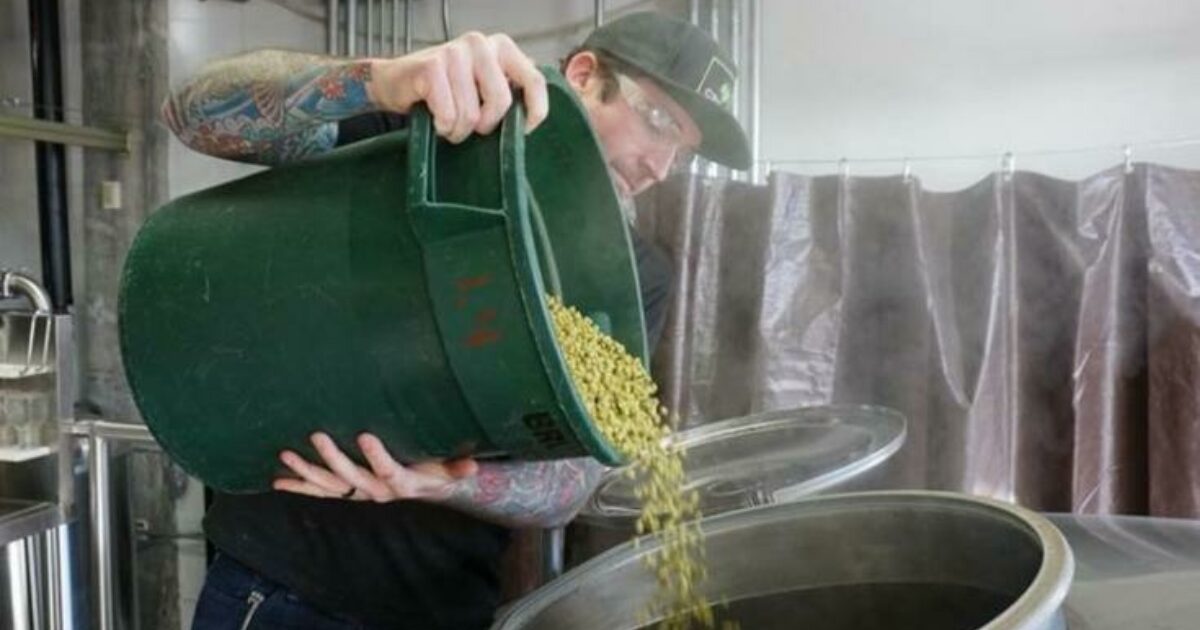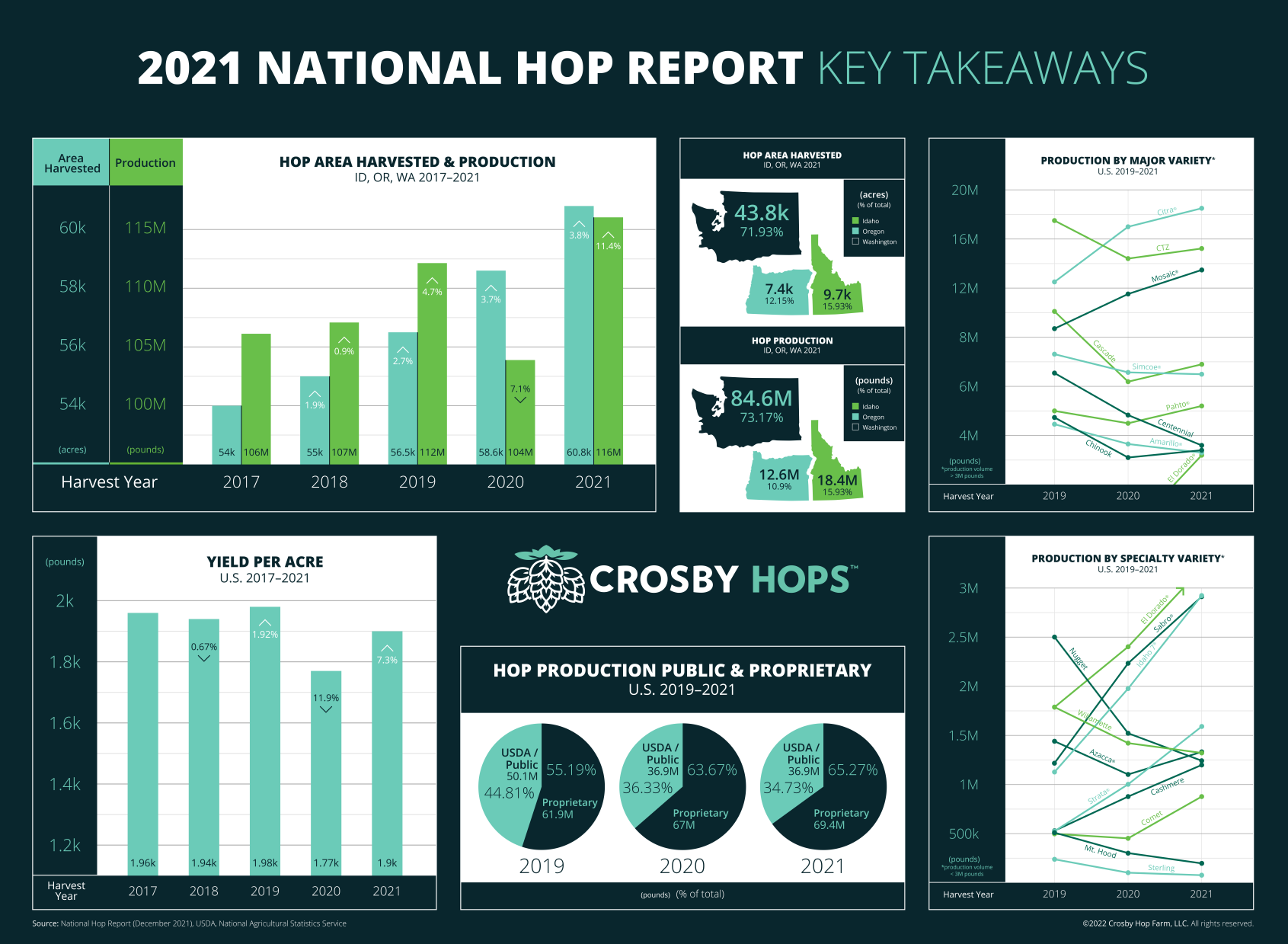National Hop Report 2020: Overall US Hop Production Down While Proprietary Varieties Continue to Rise
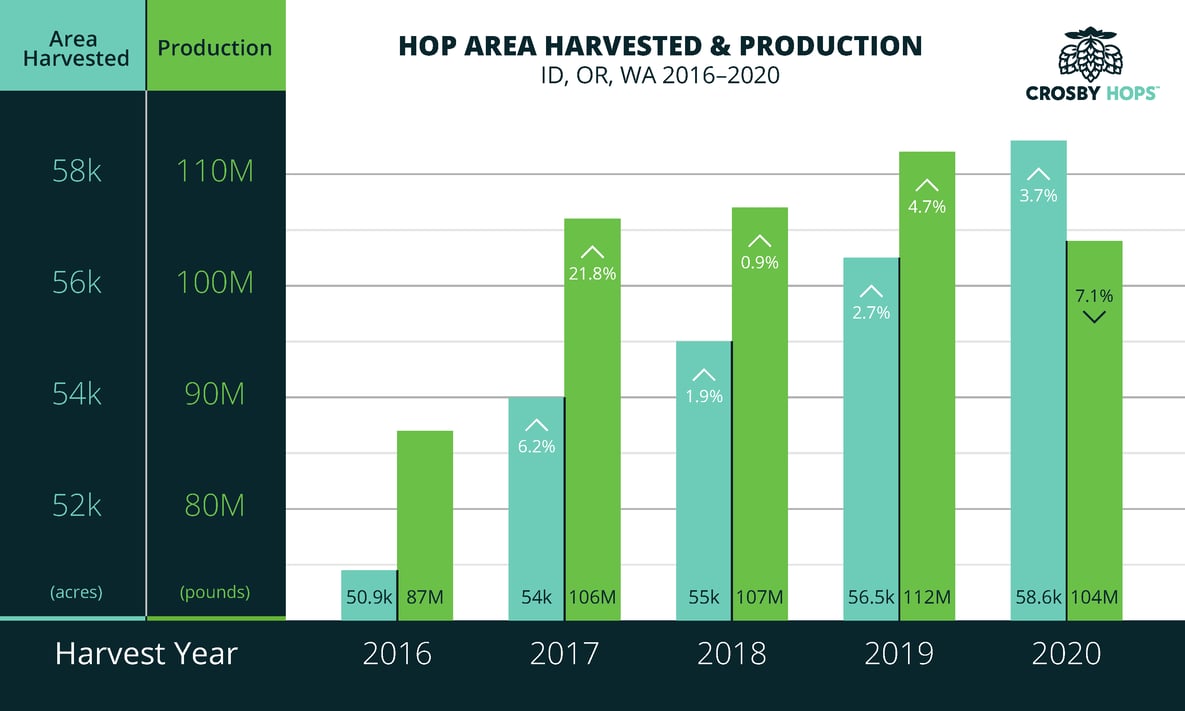
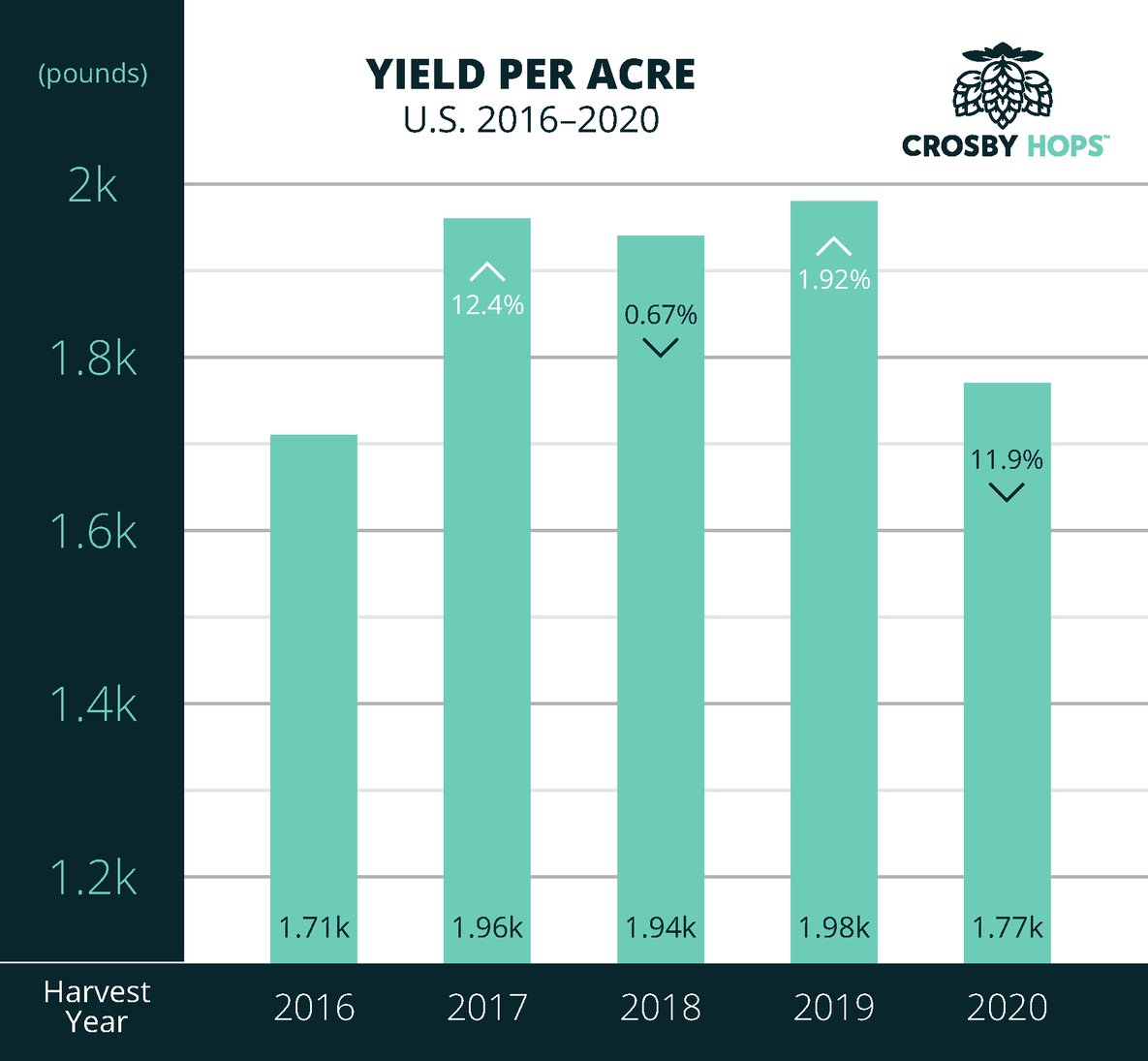
1. A generational windstorm on Labor Day contributed to a rarely seen inverse relationship between total acreage and total production in 2020 (acreage increased, while production unexpectedly decreased). A good reminder of how sensitive agriculture supply chains are and the power of Mother Nature.
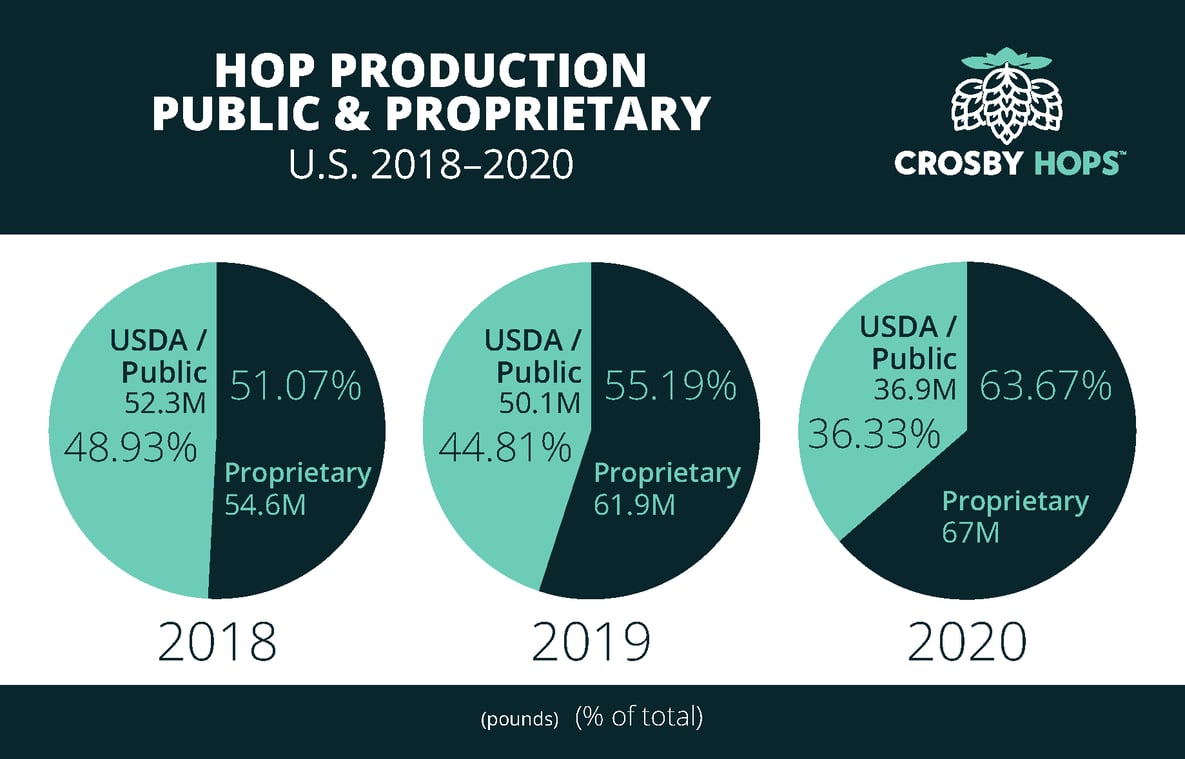
2. Proprietary varieties* continue to grab market share at an accelerating rate.
3. Citra® and Mosaic® lead the forward charge in the proprietary variety segment while Strata®, El Dorado®, Sabro®, and Idaho 7® also aggressively grab share with production increases of +92%, +37%, +91% and +75% respectively.
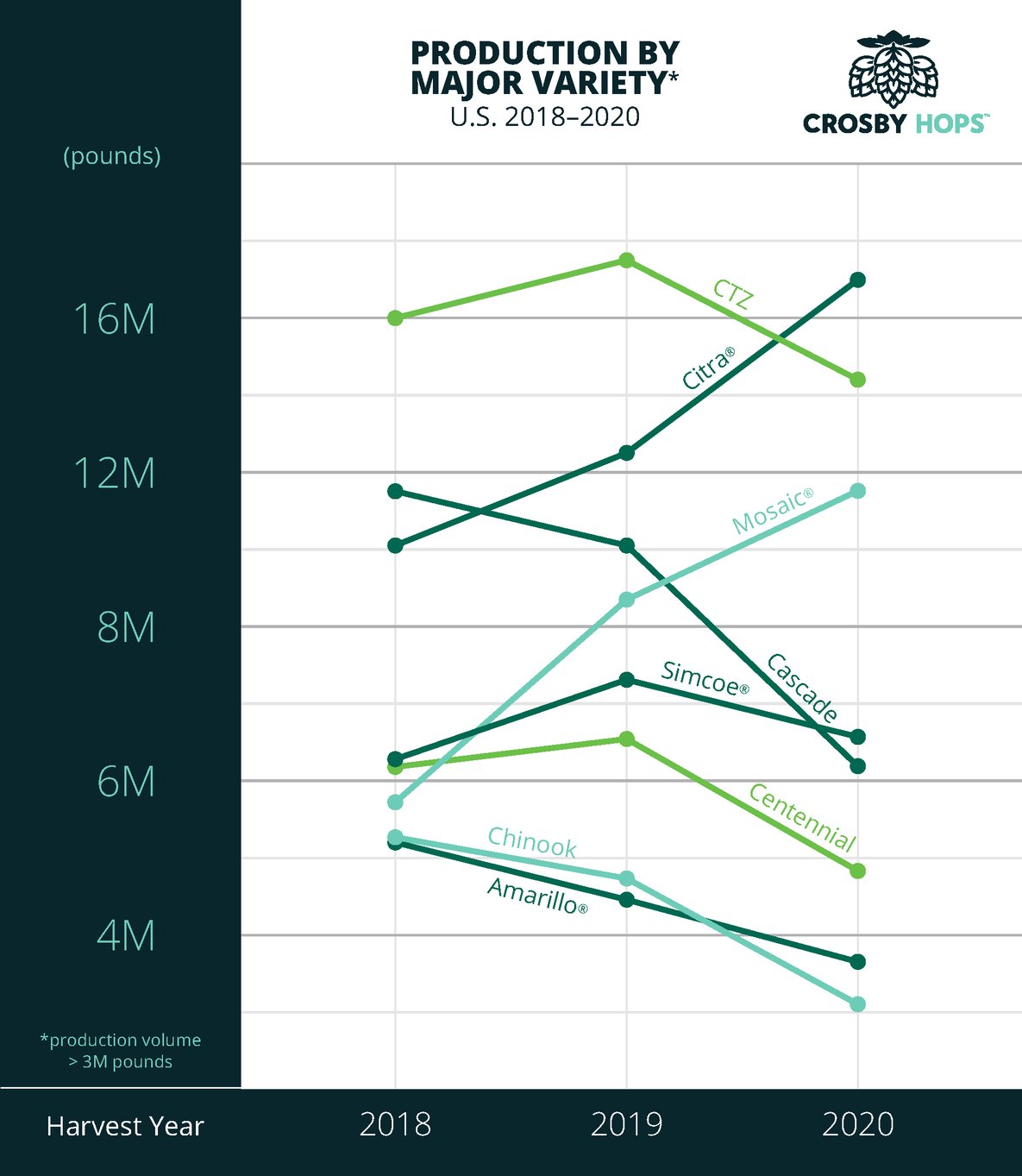
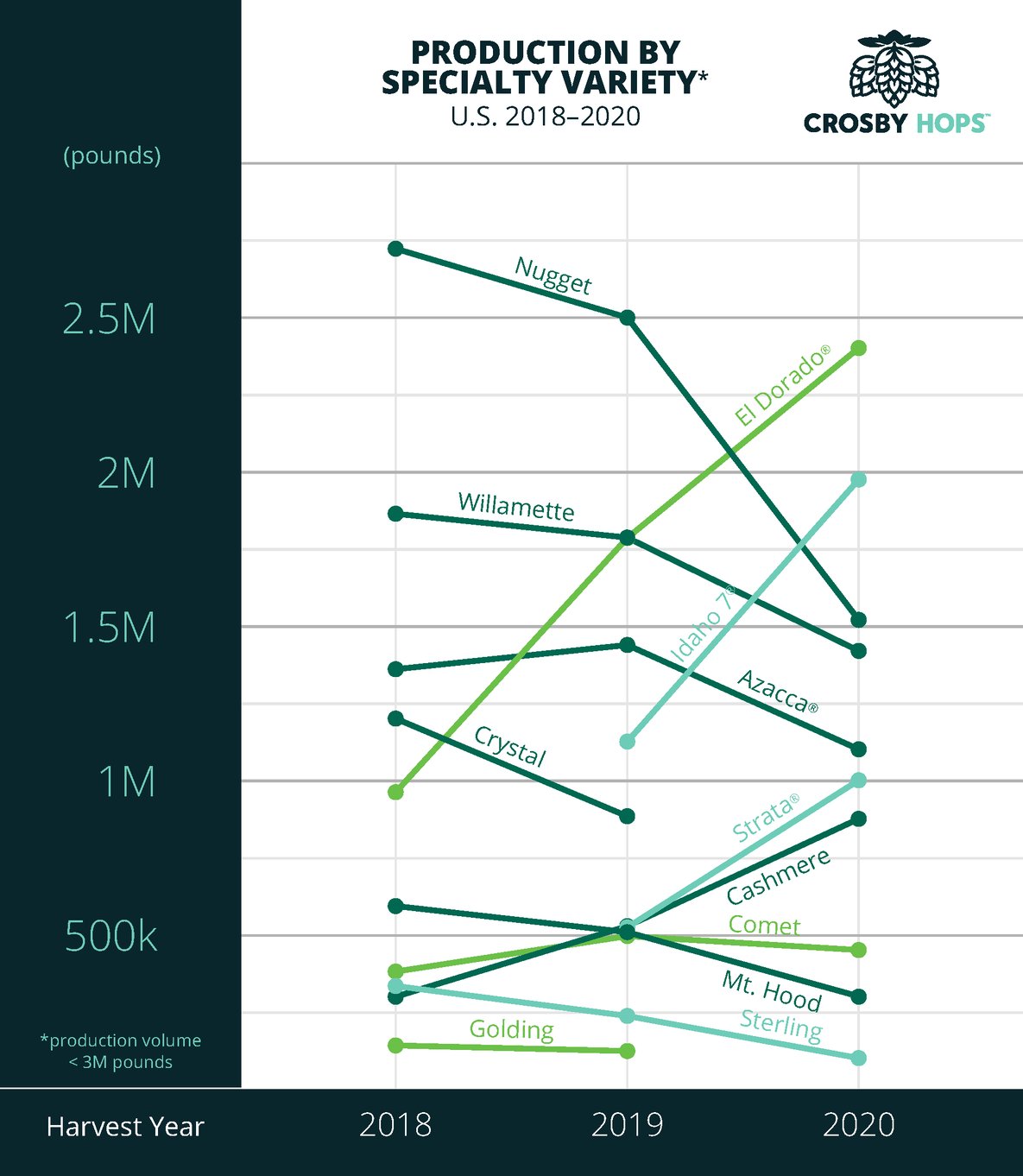
4. Public varieties** continue their sharp decline in production driven by major declines in Cascade -39%, Centennial -26% and Chinook -34%, with the sole exception of Cashmere which increased by +66% in 2020.
5. US lager hop supply chain is in a delicate position. US noble type hops like Sterling, Mt. Hood, Willamette, and Golding see historical declines YoY, a trend to watch if you are a lager maker using these hops.
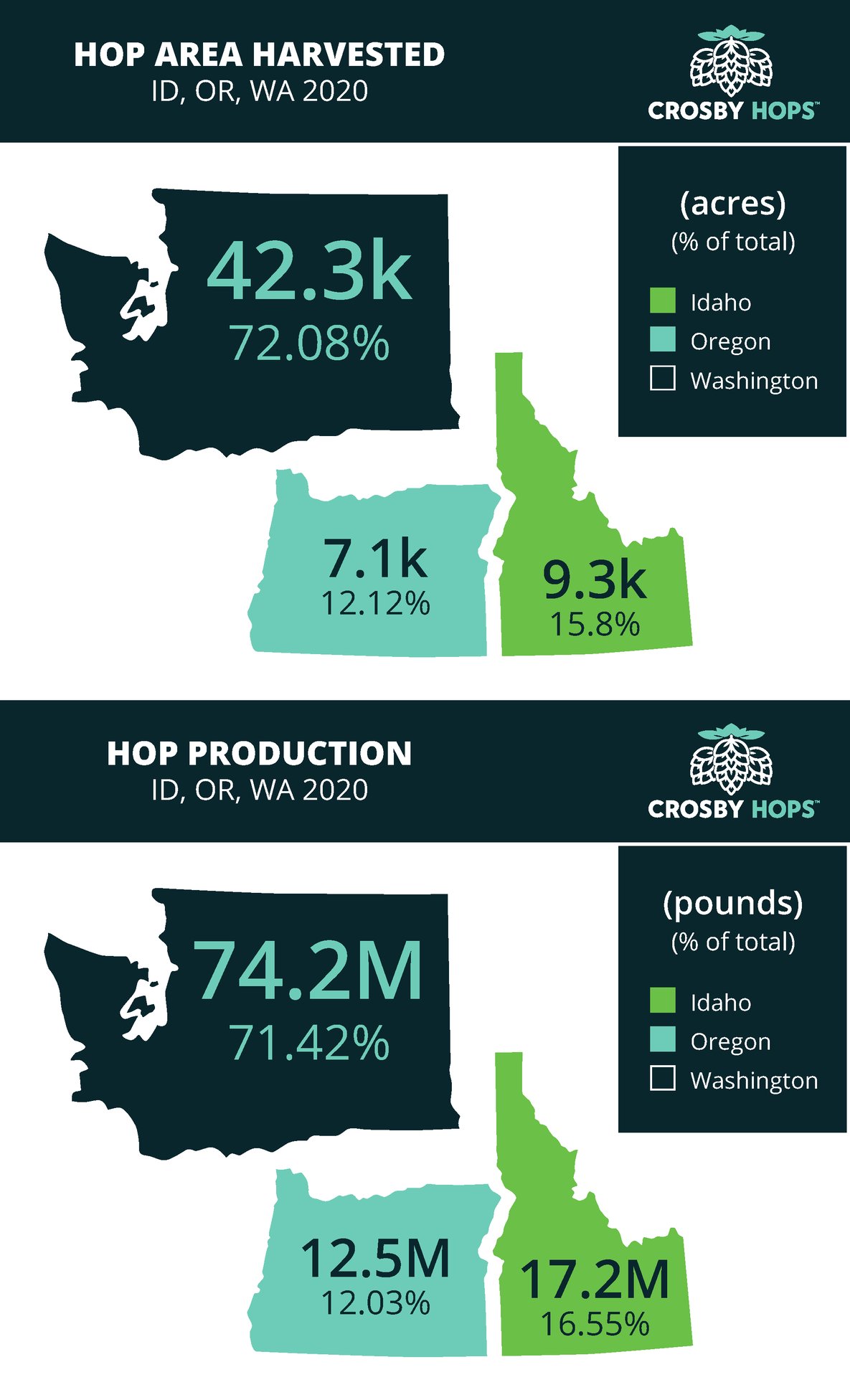
*Proprietary Varieties are privately bred by various breeding companies and often have sophisticated brand management to support their marketing efforts. These varieties typically require a license to grow and distribute, and are not readily accessible to the general public. Many of these varieties return more value back to farms than public varieties, which make them highly coveted across the industry. Innovation in this space has accelerated much faster than the public programs and has fueled much of the growth in recent years as evidenced in the infographic.
**Public Varieties are publicly bred varieties developed through USDA and various university efforts. These varieties are open source to anyone who wishes to grow and/or sell them, which is a key benefit. Consequently, they are also more susceptible to wild price and acreage swings, which creates more uncertainty for farmers and brewers. This model dominated the hop industry over the generations until the rise of proprietary varieties in the mid-2000’s. The Hop Research Council and other industry organizations have revitalized the public program in recent years. The industry expectation is this segment will continue to release unique and novel hop varieties for the craft market of the future.
Check out the full 2020 National Hop Report HERE











